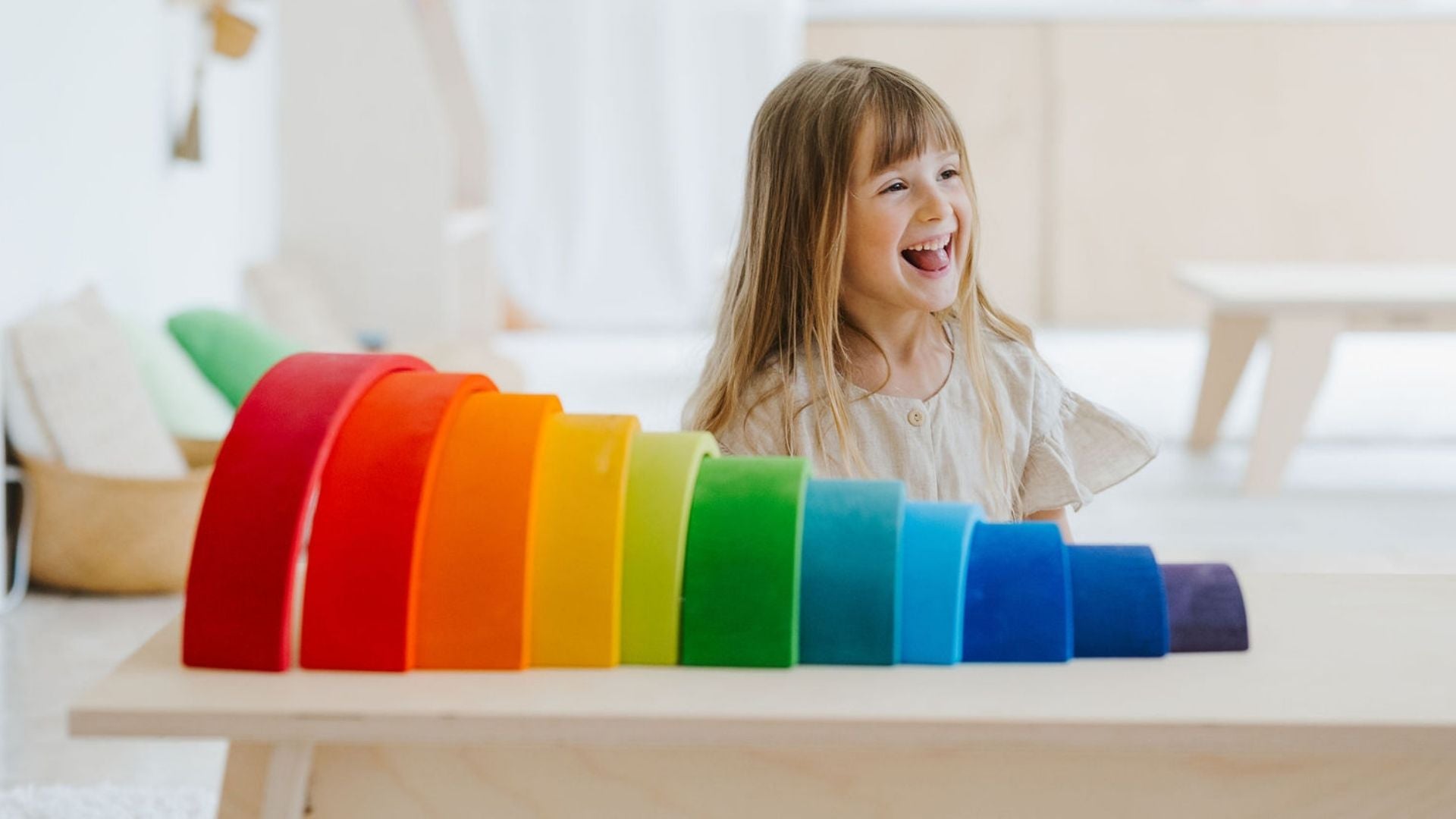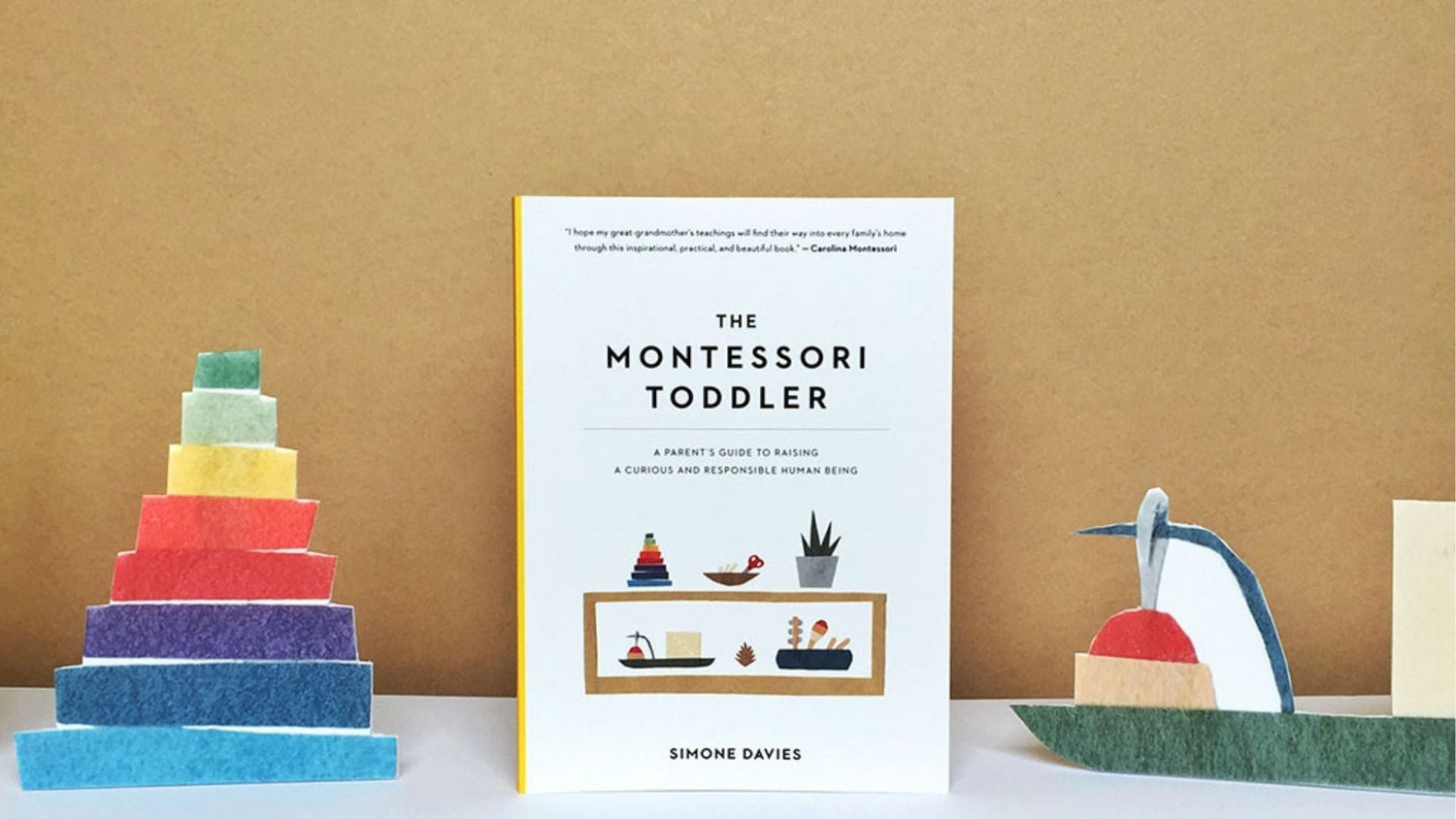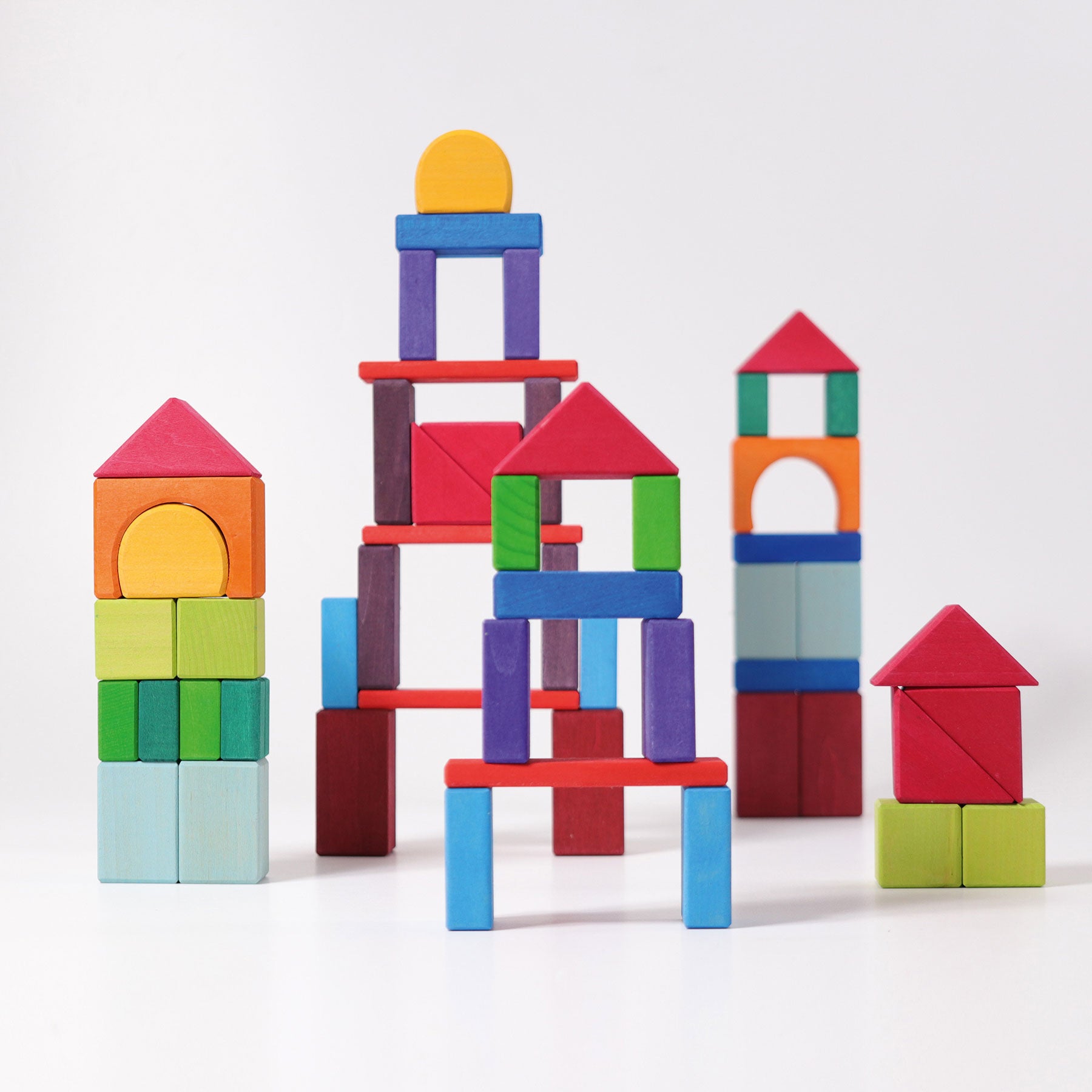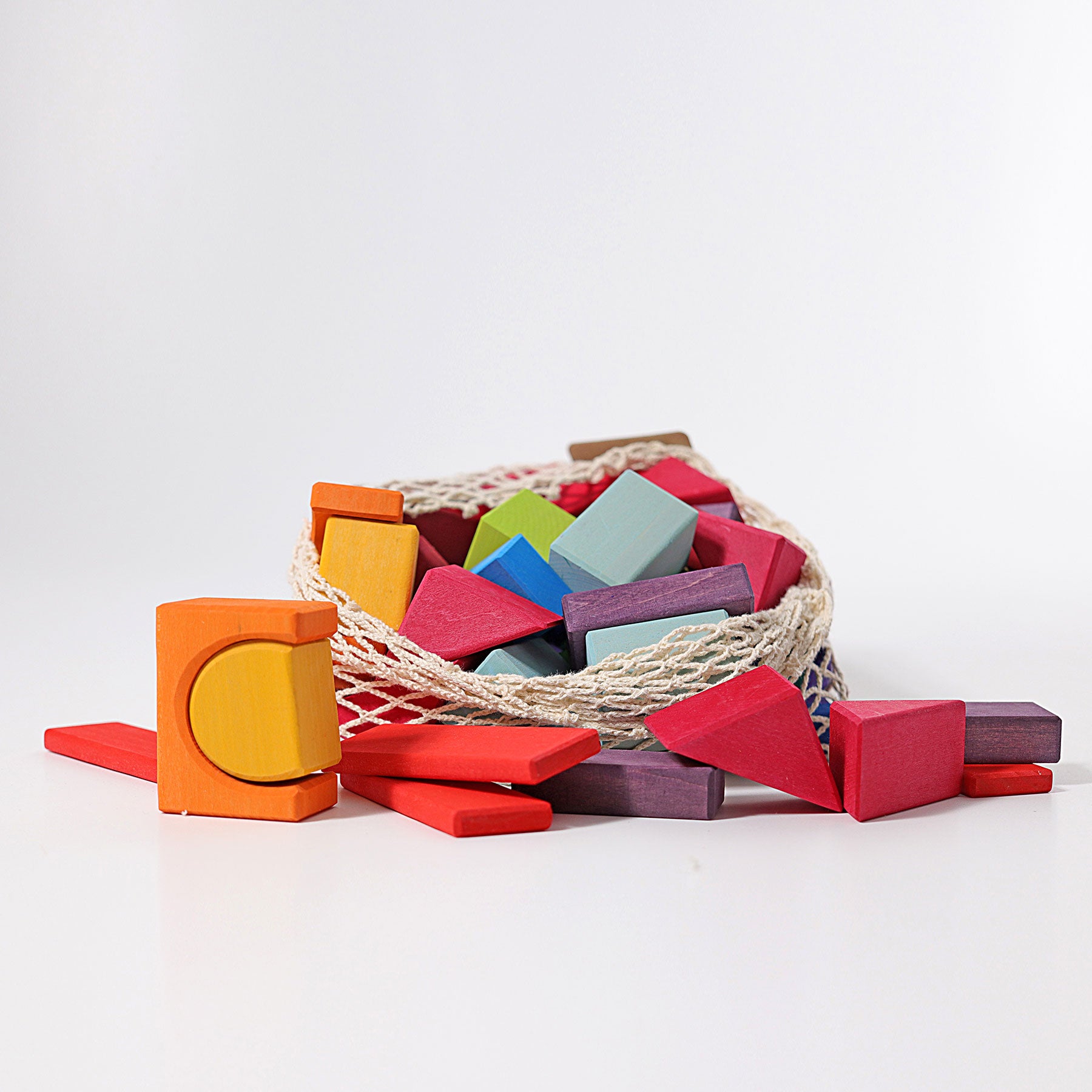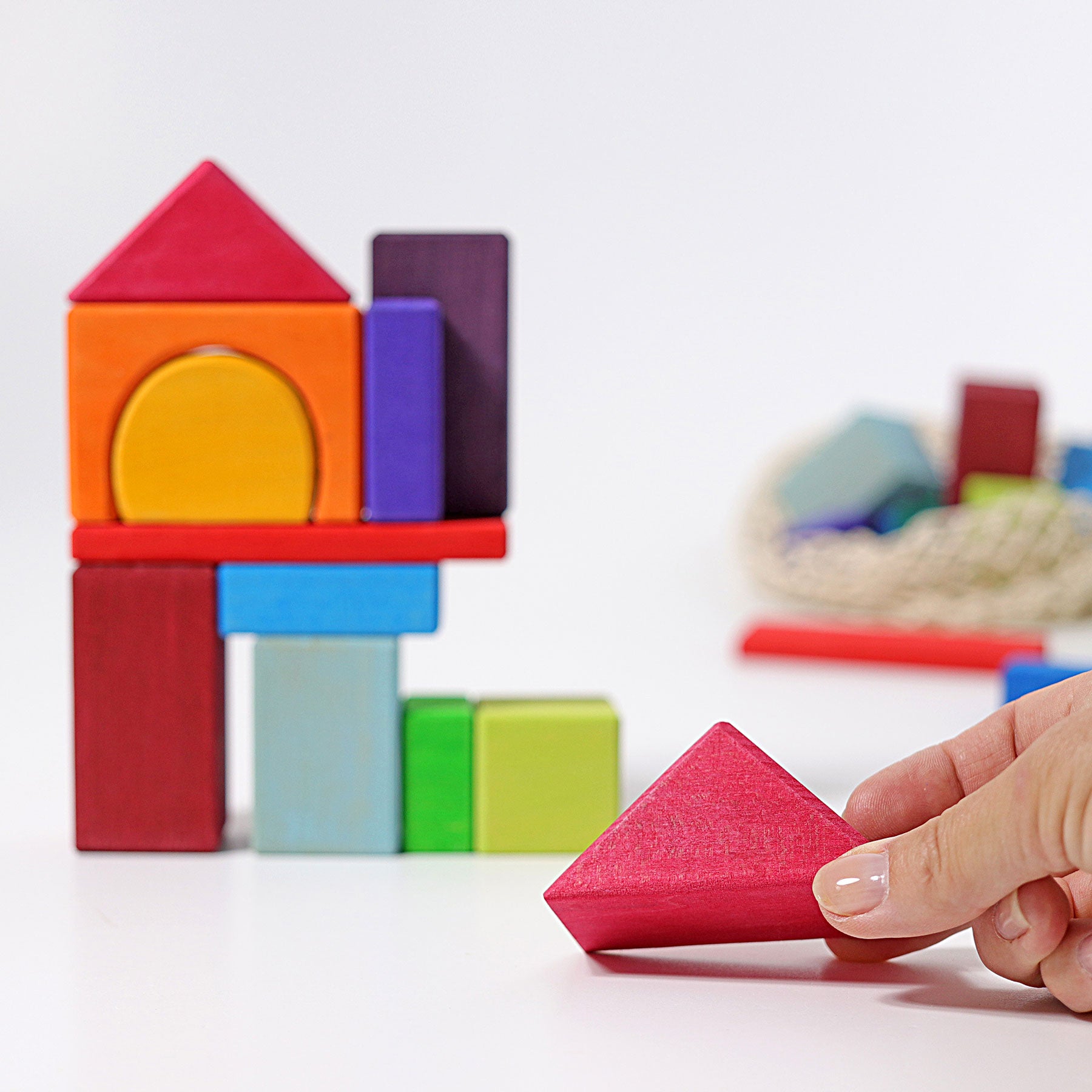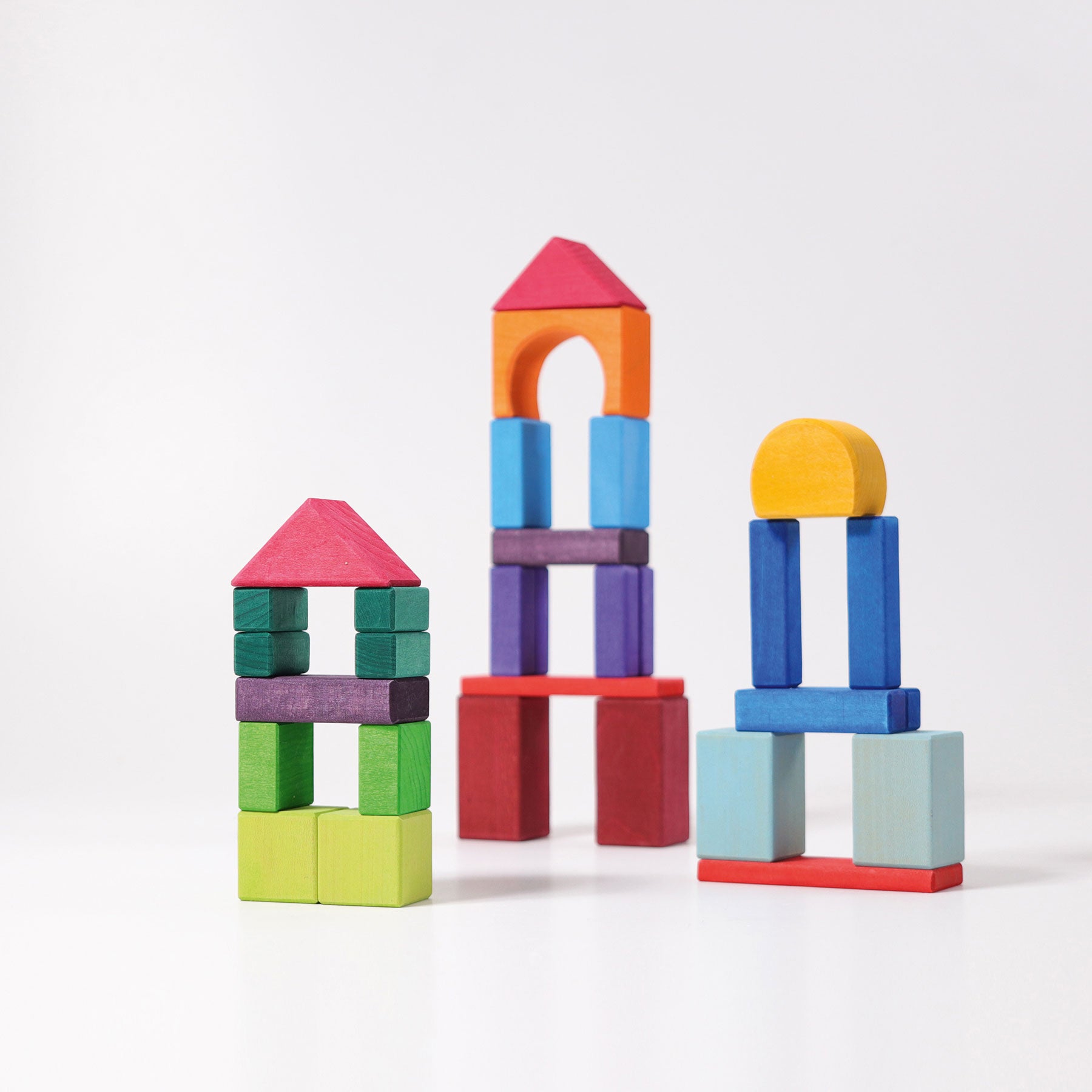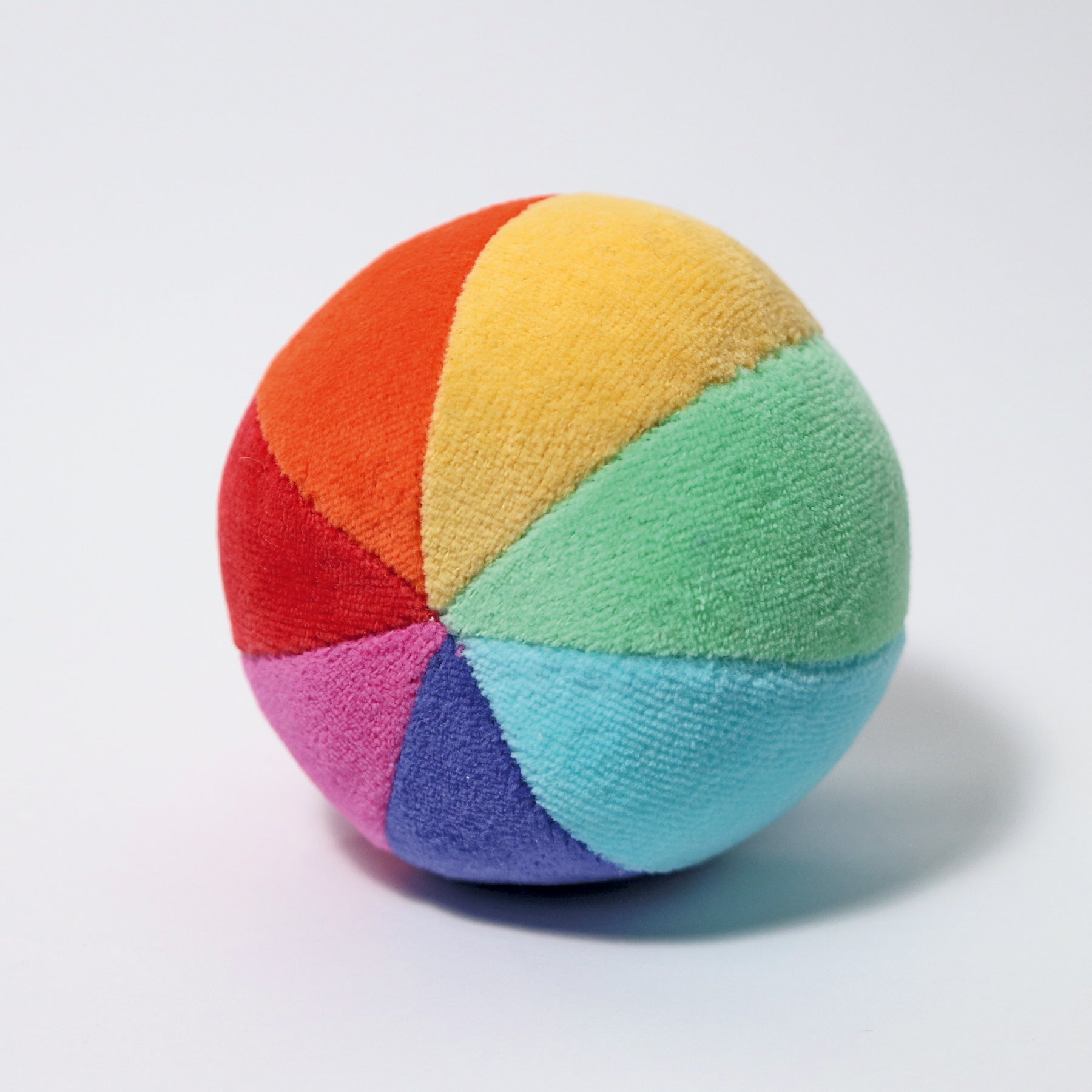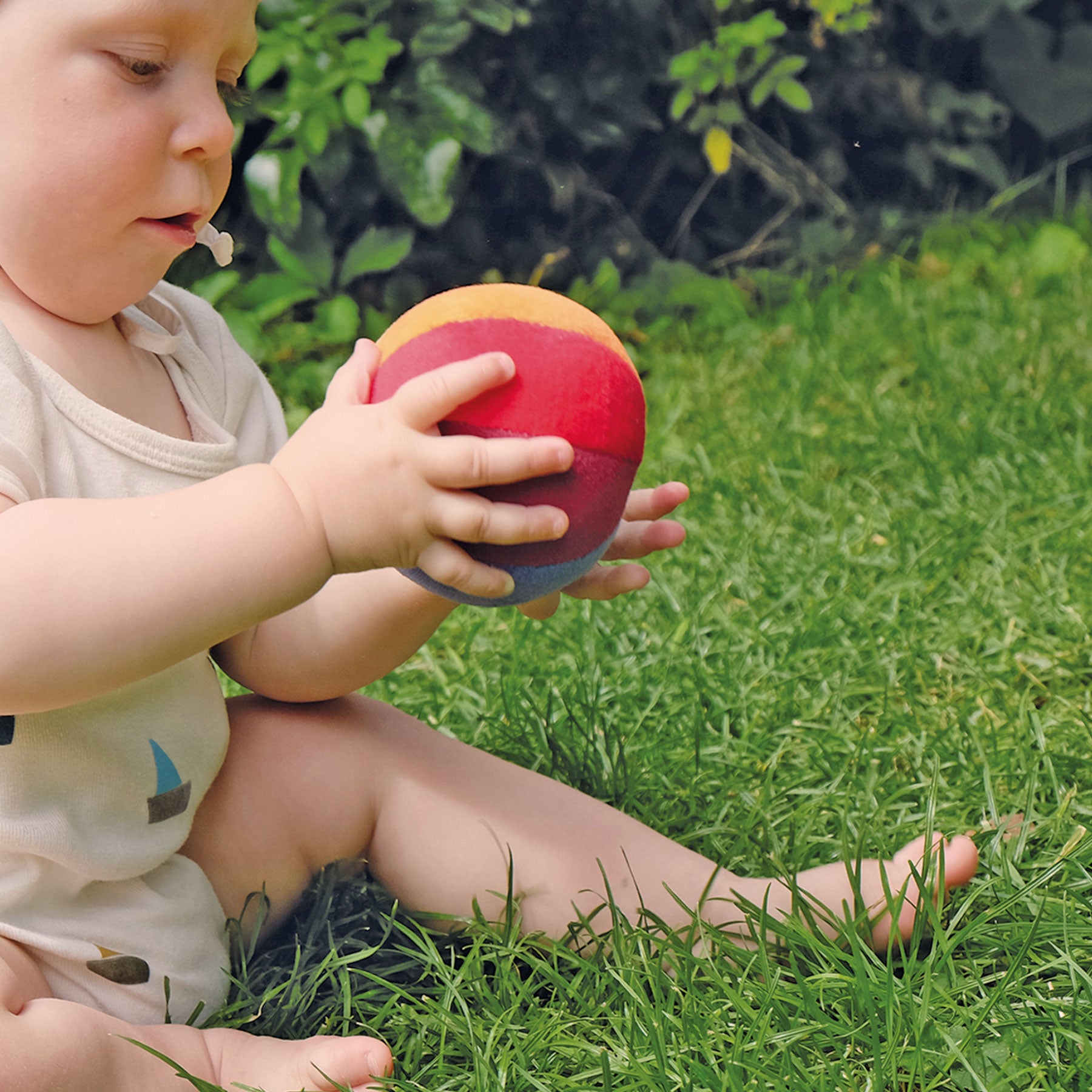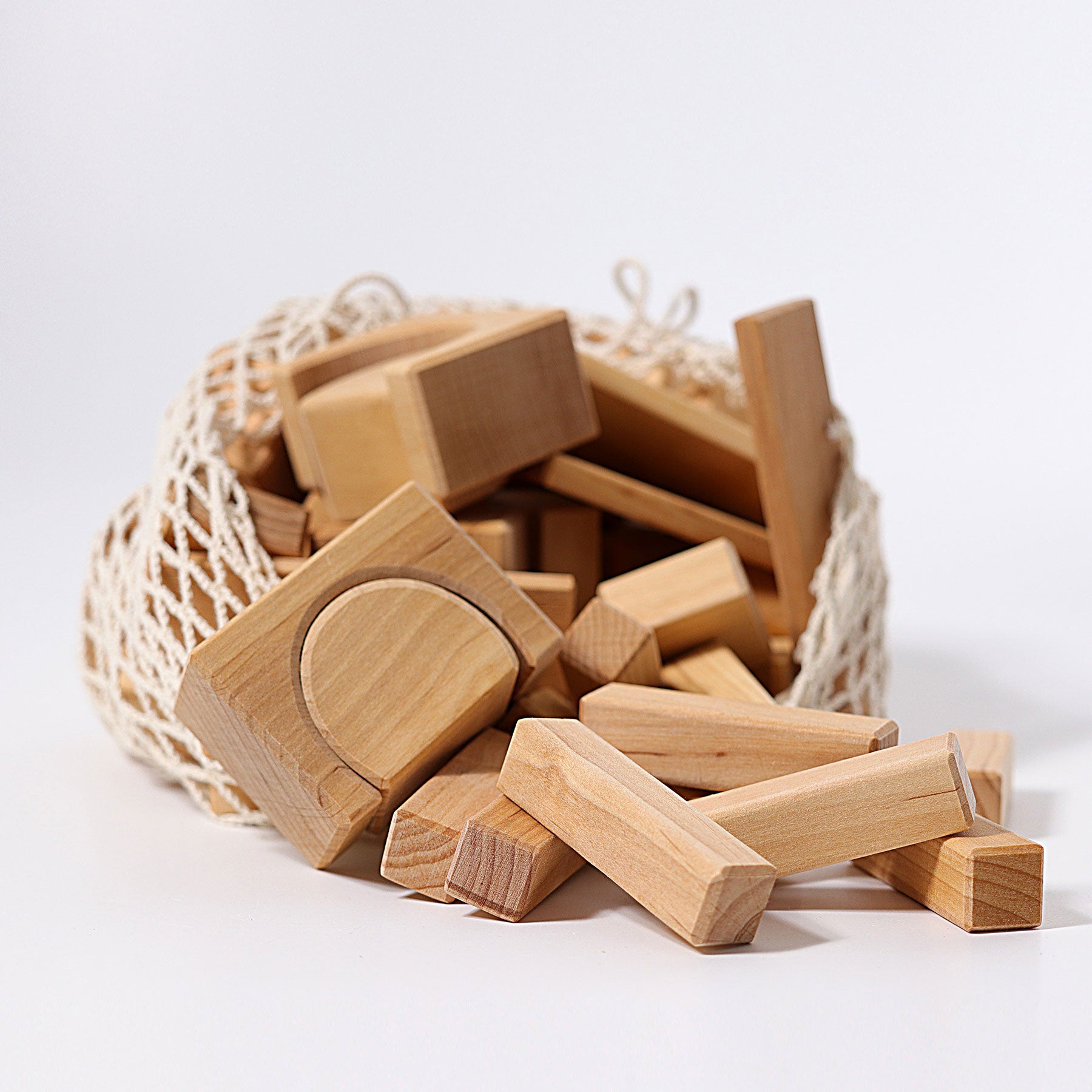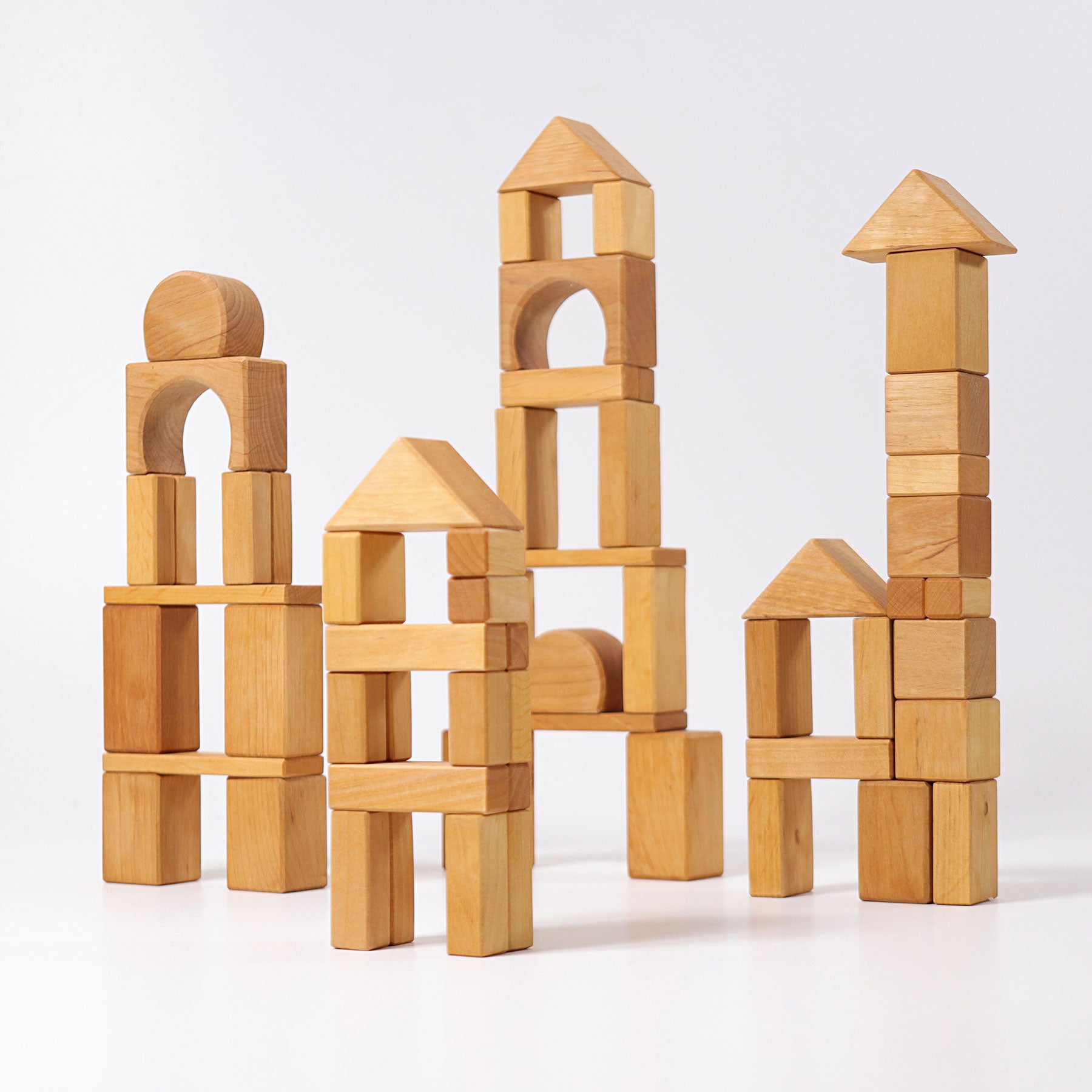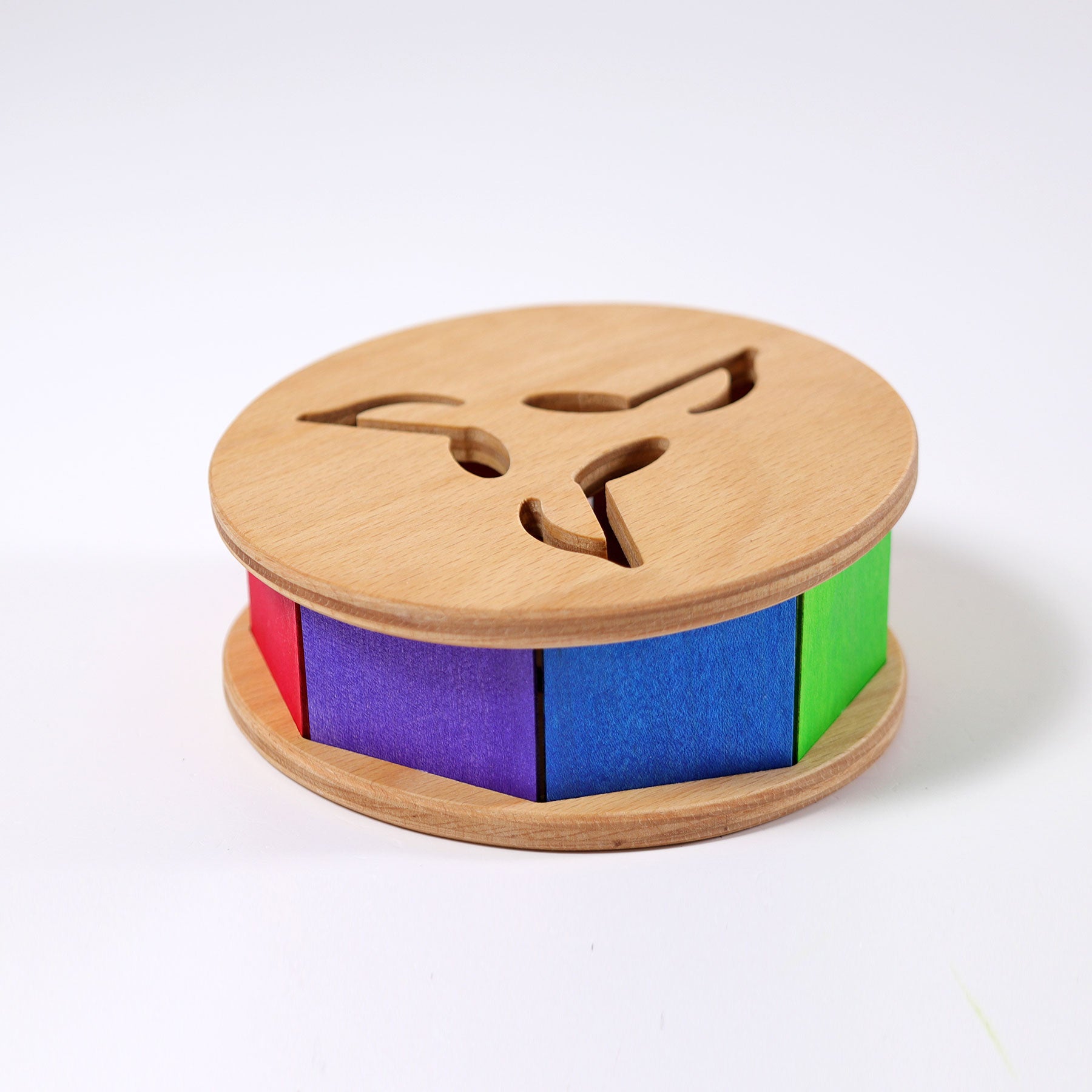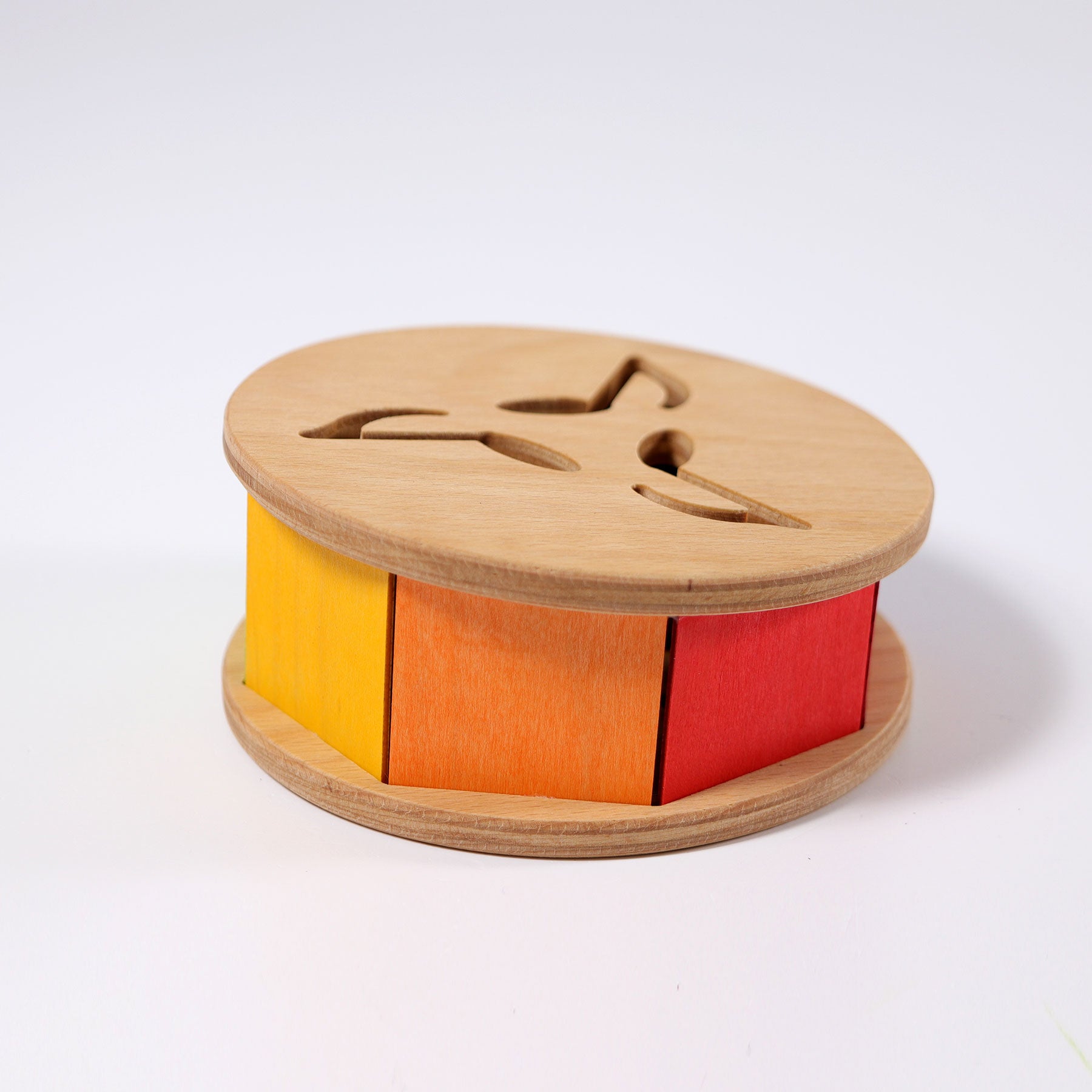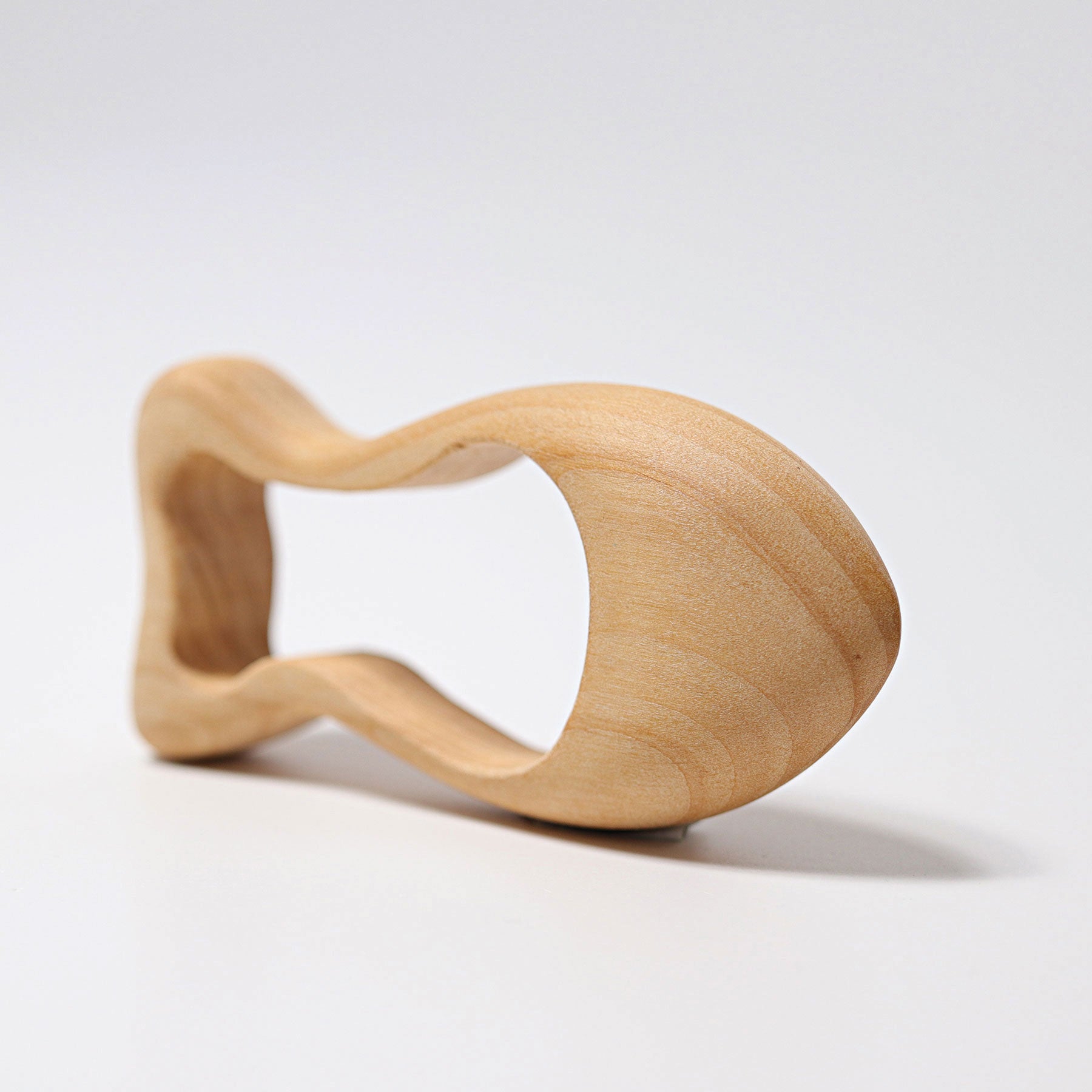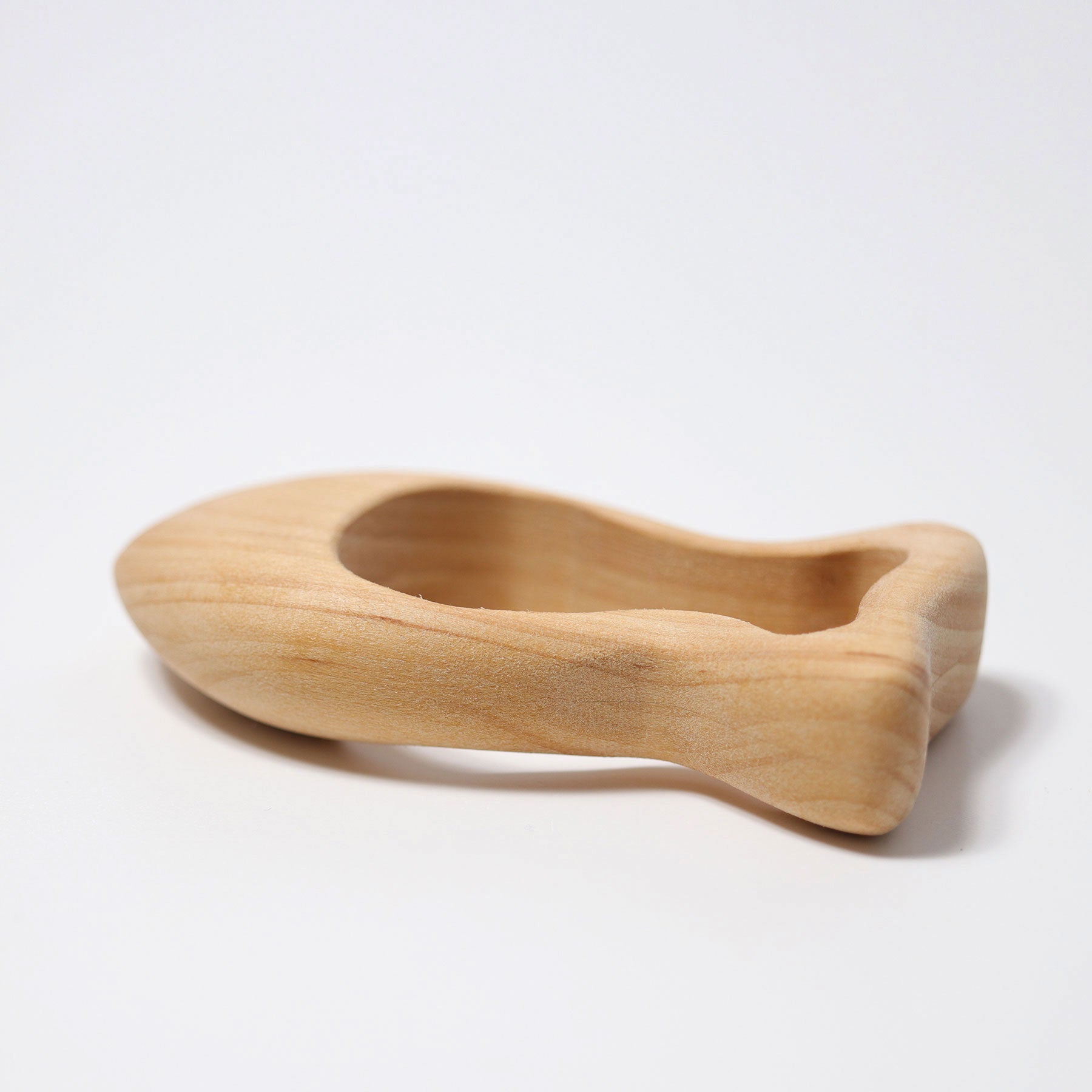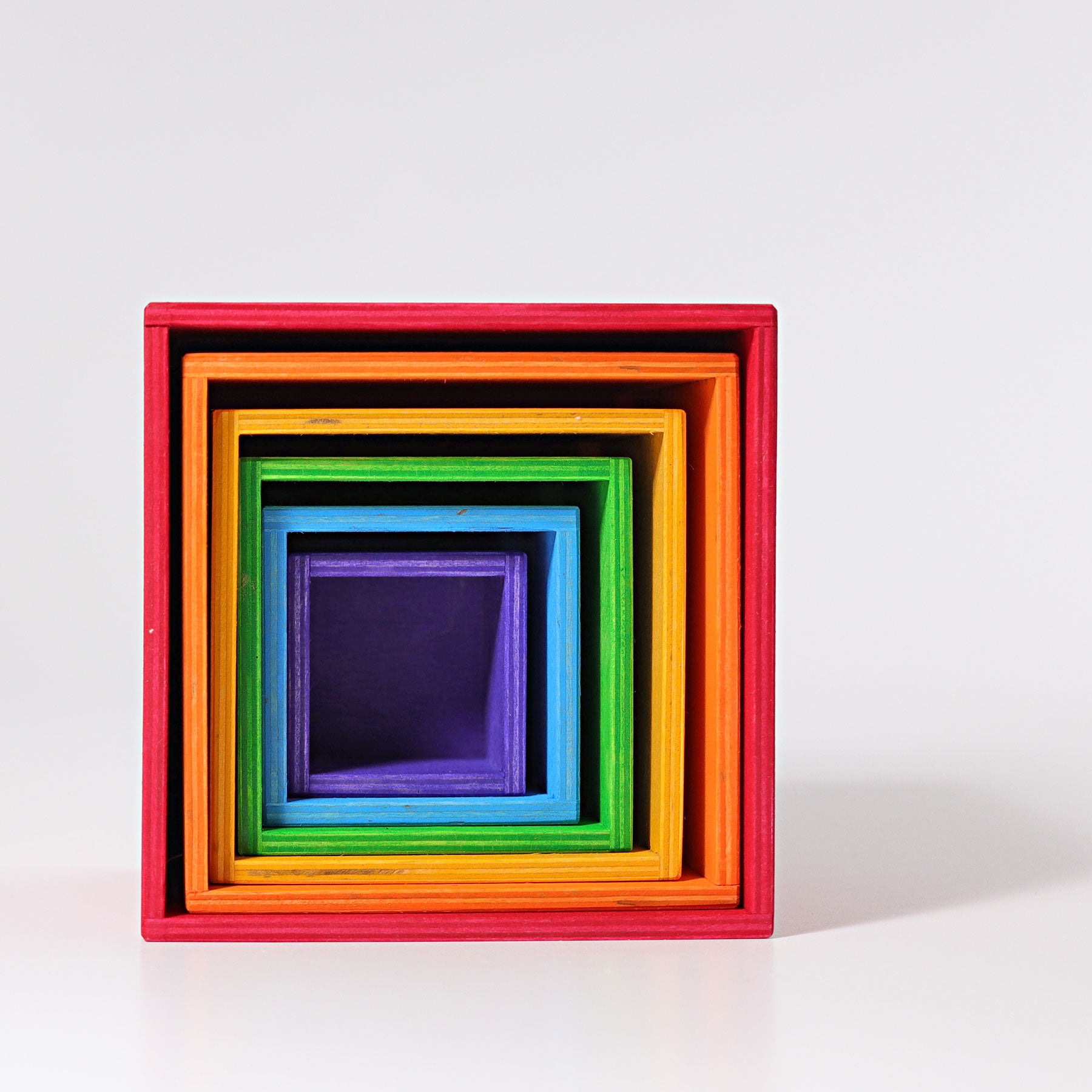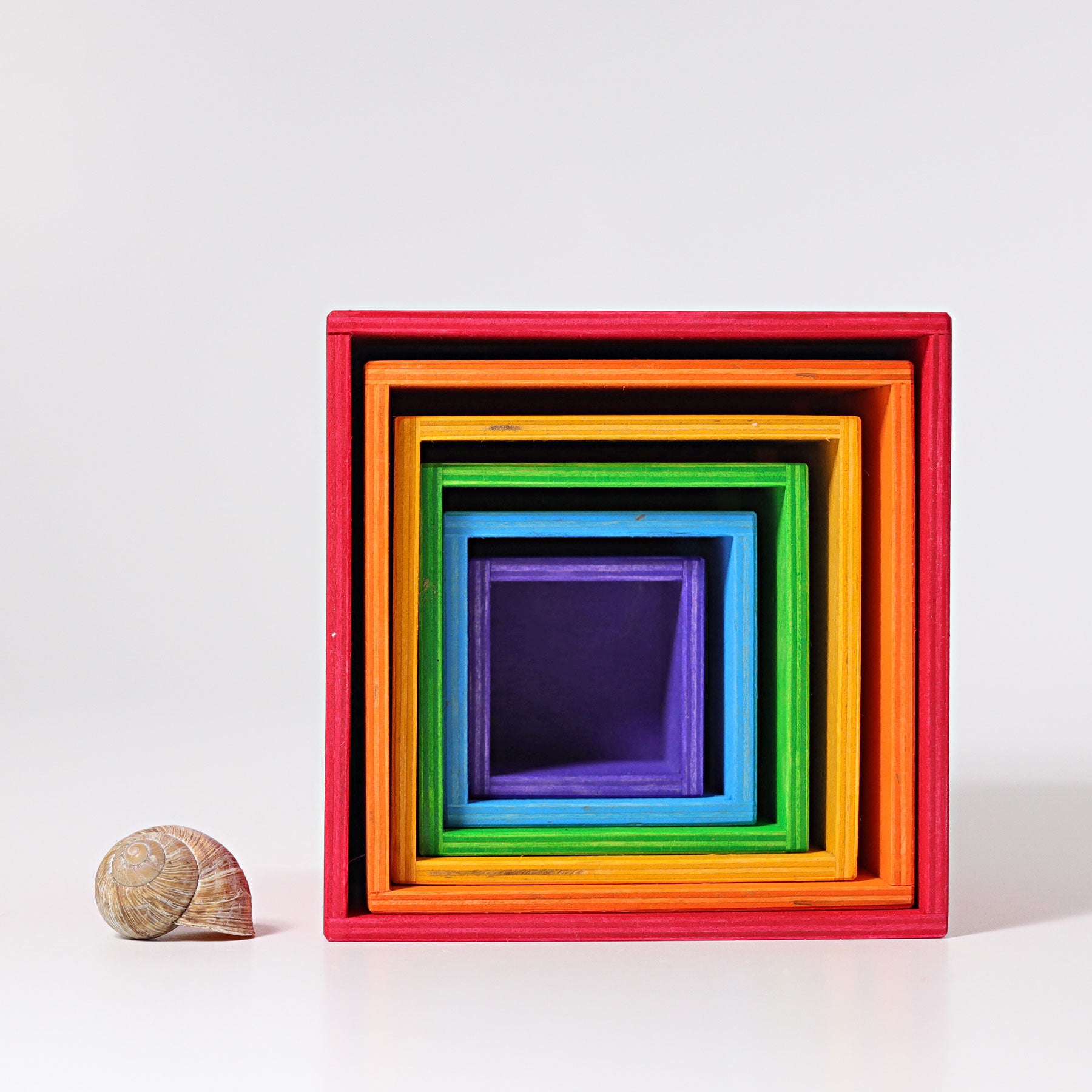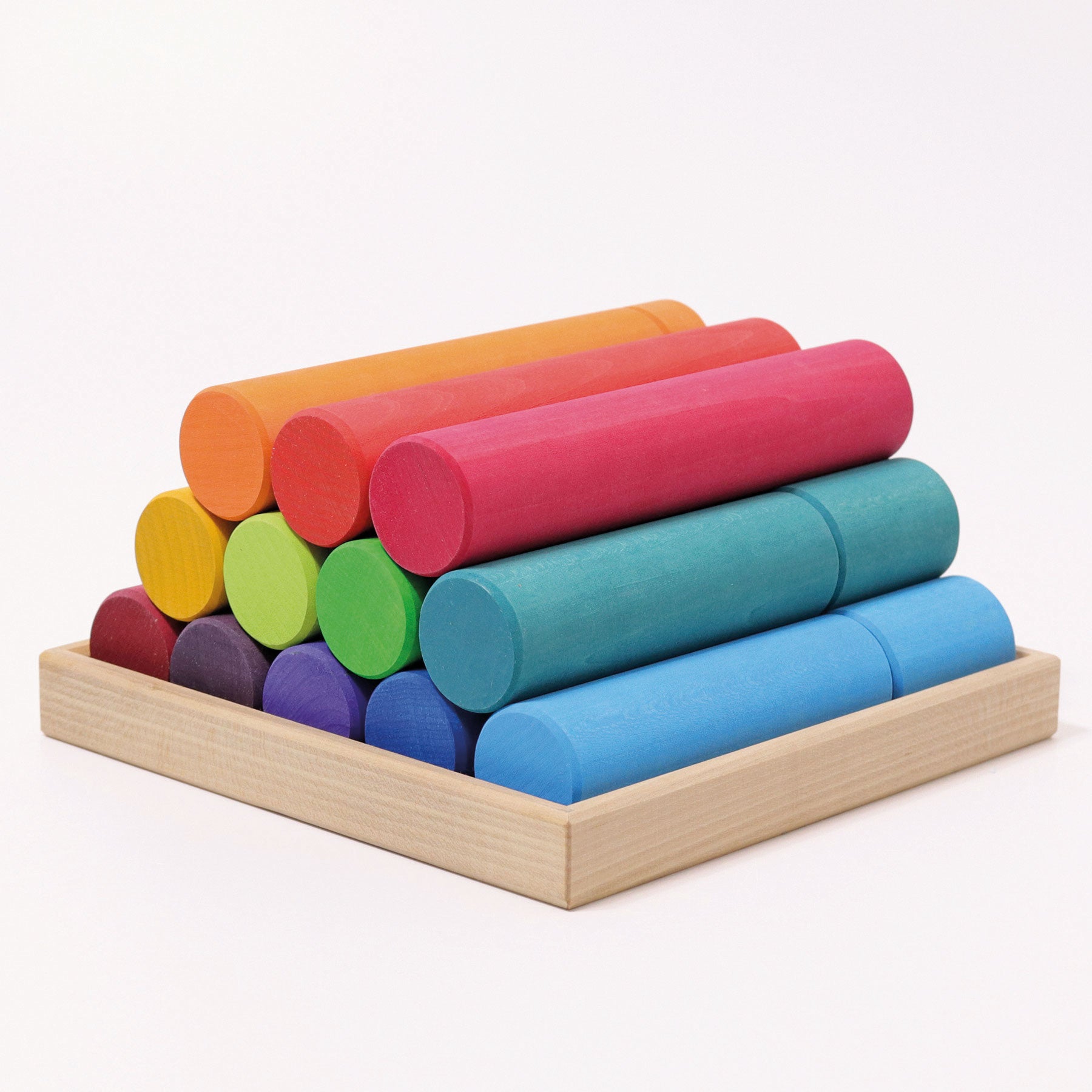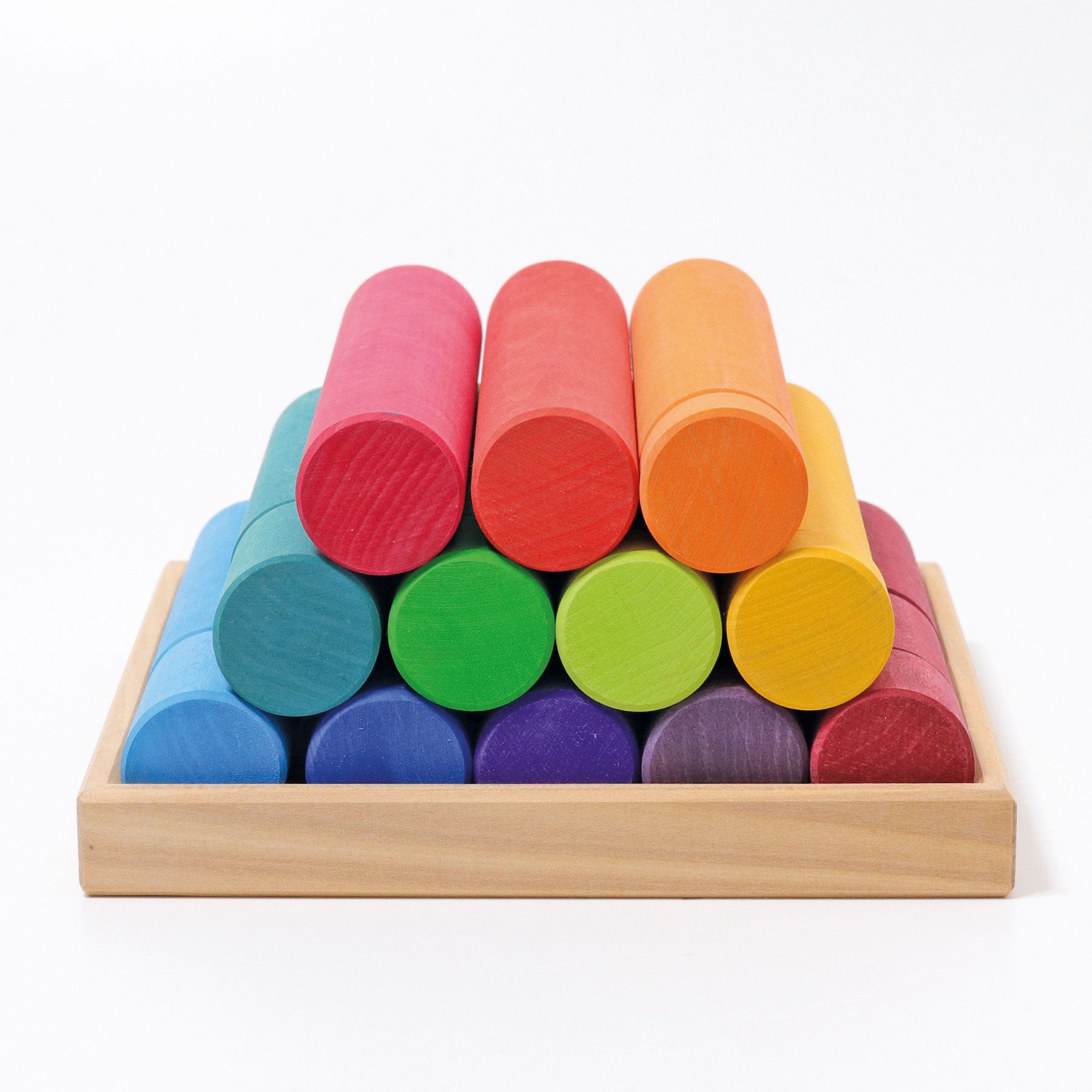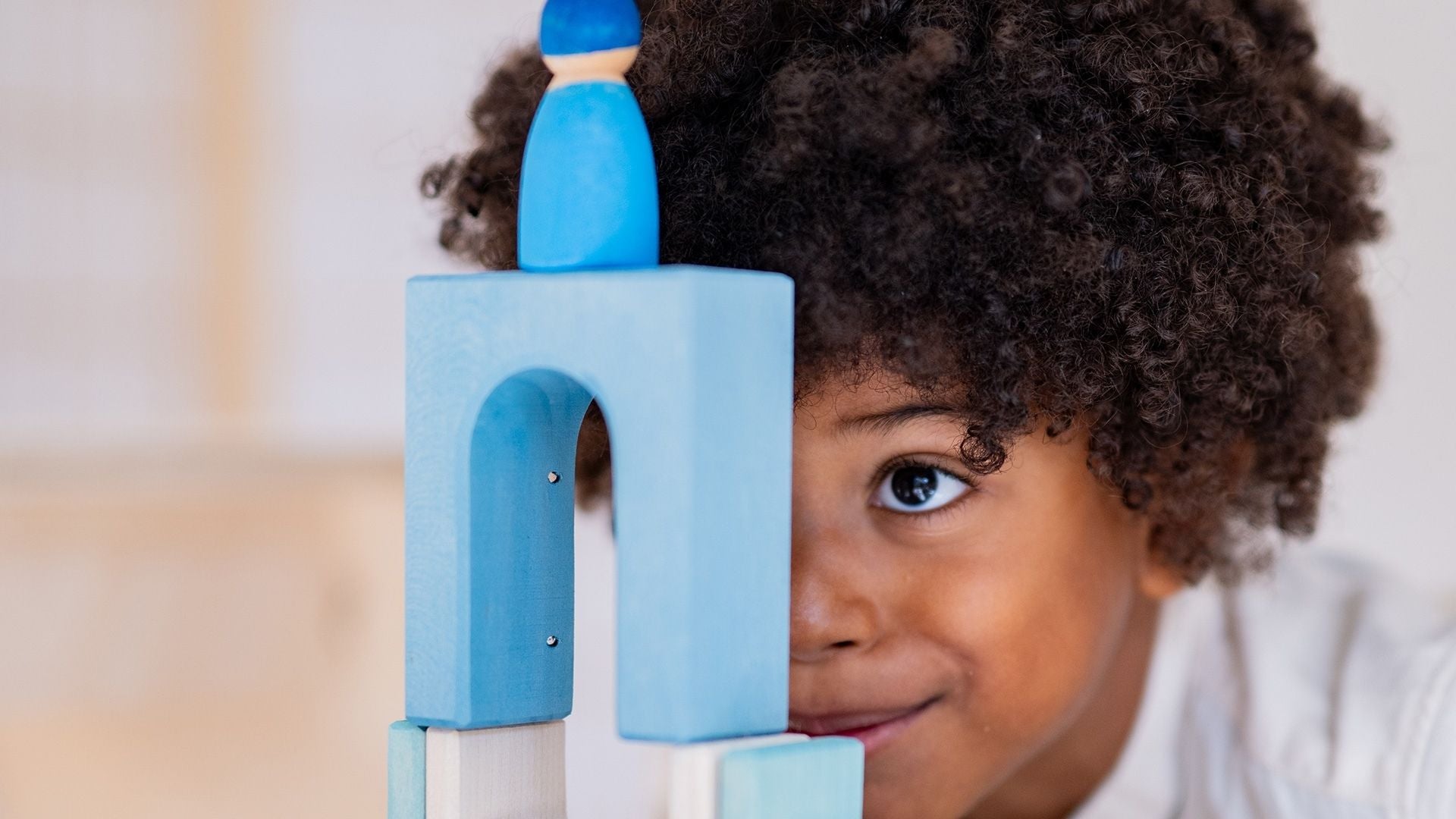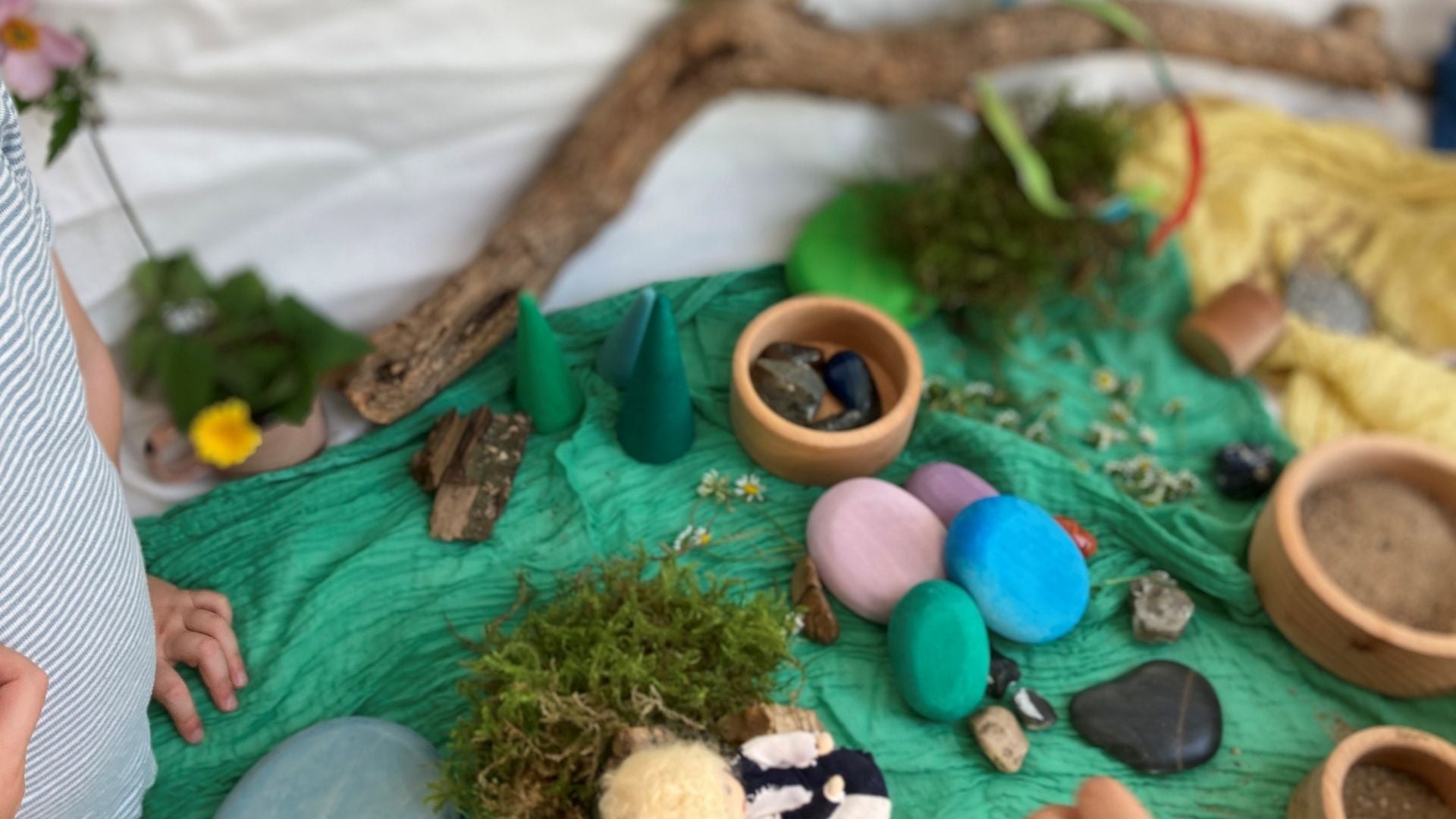A text by Simone (GRIMM'S)
GRIMM'S: Expectant parents want to do everything right, especially with their first child. They're constantly being told that they need this and that to be optimally prepared for the arrival of the new family member. In "The Montessori Baby," however, you write the opposite. It says, "Babies don't need that much." And in "Montessori for Parents," it also says, "less is more." Can you explain this aspect in more detail?
Exactly. We can consciously set up our home with fewer toys and instead offer only a handful of carefully selected activities. These activities are based on what we observe our child is interested in and what they are currently practicing.
When there are fewer options to choose from, it's much easier to make a choice. It's like going to a supermarket and having an unlimited selection of cereal—it can be very overwhelming. When we only have a small selection of things we like, it's easier for us to make a good choice. It's exactly the same for our children. When they have fewer choices, they can focus on those activities for longer because there are fewer distractions, and they have more opportunity to find their own creative solutions, because limitation breeds creativity.

GRIMM'S: If you follow your advice, you can definitely save a lot of money! (If only I'd known that before! :-D) Ideally, you should invest this amount in quality and—as you write—in a "more natural version." Why is the natural aspect so important? Do you think babies, toddlers, and children already have a sense for natural materials, such as untreated wood as opposed to molded wood or even plastic?
We like to select a few high-quality materials. These last longer, are more sustainable, can be passed on to future family members or friends, and are fun to explore. Children under 6 learn with all their senses and make their discoveries through touch, smell, hearing, taste, and sight. Natural materials like untreated wood provide them with plenty of sensory feedback—the weight, texture, and even warmth of the material can be felt by the child and are also visually appealing. We also know that young children like to explore with their mouths, and these natural materials are safe for them to explore in this way.

GRIMM'S: During their first year, babies constantly receive new "updates." They are soon able to decide for themselves whether and with which of the offered play materials they want to interact. Can you give some recommendations for a baby's first Montessori shelf? What can new parents offer their offspring?
When a baby is lying on a mat to practice stretching, reaching, rolling, sliding, and crawling, we can provide a low shelf or basket with some attractive materials for them to select and explore, making them easy to access (rather than storing them out of reach in a toy box).
They're becoming familiar with their hands, so we can provide some rattles that encourage grasping and various hand movements. Balls of different sizes and textures also encourage exploration and promote dexterity. They can also encourage sliding and crawling as they roll away. Cylinders are also a good choice for this reason. They roll away, but not too quickly or too far, so the baby can experience success in crawling after and retrieving them.
GRIMM'S: And what should you avoid and why?
There are many active toys for babies that we'd rather avoid. These are toys that often sing, flash, beep, and make noises. With such toys, the child is more likely to be entertained by the toy than actively participating. Instead, we can look for passive toys that allow the child to be active. The baby can make discoveries or find new ways to use the toy. Babies learn through active experiences and by doing, rather than being entertained.

GRIMM'S: In the book "Montessori for Parents," we learn that Montessori activities have a beginning, a middle, and an end, and that we should encourage the child to return the play materials to their original place when the task is finished. But what should we do if a child has created a small play world with building blocks, for example? Should this also be put away, or should we leave it where it is for the child to play with later?
In a Montessori classroom, most of the activities we offer children have a beginning, a middle, and an end. They choose an activity from the shelf, play with it, and then put it back when they're finished and ready for another child. In our home, we can be more relaxed about putting everything away, for example, by putting everything away before snack time, lunch, or bedtime. If our child has built a little play world with blocks, we can ask them if they want to keep it for later or put it away. Or if we need to put it away to make room for the rest of the family, we can offer to take a photo of it to record its use before we put it away.

GRIMM'S: That's a great idea! And how do we handle it when the child combines play materials from different Montessori bowls to pursue their own play idea?
In a Montessori classroom, many of the sensory materials have connections, and it's exciting when the children discover these connections. We observe them, as always, to understand. Often, they make connections and discoveries we might not have thought of. Other activities that are set up on trays for specific activities are generally not combined. At home, we can definitely encourage exploration and combining different materials, as this allows the child's creativity to shine and they may make some great discoveries. We can also encourage reuse of the materials once the child has finished exploring.
GRIMM'S: In "Montessori for Parents," there's a chapter titled "What about non-Montessori toys?" Among other things, it recommends wooden building blocks for open-ended play. Why are they so valuable?
Wooden building blocks allow for creativity, collaboration, balance, design, and lots of fun. There are endless creations our children can build with blocks. What we as adults might think of as building a road can become a railway track, a supermarket, a playground, a farm, or a church. This allows our children to take things they've seen in real life and create their own creations based on those ideas. Sometimes the blocks are simply used to balance each other or to build walls or other structures. There's so much to learn and play with that makes it fun.
GRIMM'S: The chapter mentioned above also states that children attending a Montessori school should have the opportunity at home to "(...) engage in unstructured play, create opportunities to spend time outdoors, and rest." Why are these things so important in addition to Montessori activities?
We like to say that the best gift we can give our child is the gift of time. When we allow them large blocks of uninterrupted time, they have time to be bored and come up with their most creative ideas. They have time to be in and connect with nature, which can be an antidote to the over-scheduled, hectic world of many children today. They can climb a tree, collect rocks for a nature collection, take off their shoes and socks to put their feet in the mud or a stream, or create a mandala from found treasures. And the quiet allows the body and mind to recover, to dream, to watch the clouds, and to help the nervous system relax and recover. To find itself again.

GRIMM'S: Let's end our interview with the topic of toys. Your latest book, "Your Montessori Child," for children ages 3 to 12, also addresses play materials. You recommend choosing toys "that grow with our child, objects that can be reused over time, that can be used in new ways (...)." Do you have a recommendation for our readers? Which purchases are really worthwhile during the baby, toddler, and childhood years?
Yes, we love finding activities that are long-lasting and that our child can continue to use as they grow. We love the sound and color wheel for babies—when they're babies, they'll be excited to move it, hear the sounds, and repeat them over and over again. As they become toddlers, they'll enjoy rolling it, trying to make some rhythms with it, and learning the colors through play. Older children love coming back to the balance bike to see how it works. They can build a ramp, find other colors that are the same as those on the wheel, or use it as an instrument in their band.
The Rainbow Large Box Set also grows with our child. As toddlers, they love nesting the boxes inside each other and building towers, gradually constructing a tower. As they get older, they learn to sort the boxes by size—large and small, bigger and smaller, largest and smallest. The colors can be used to sort objects or as part of a larger piece they are building. They can even be used for academic explorations such as measurement, volume, area, etc. Even for older children, the Ammonite Building Set is a beautiful and challenging puzzle for older children. When completed, it looks like a work of art, with the pieces fitting together to form a beautiful spiral. Children also enjoy using the pieces in creative ways to build.

GRIMM'S: Last question: Can Montessori principles be applied to a person's entire life, or does it end at a certain point? After the Montessori baby, the Montessori toddler, and the Montessori child, will there also be the Montessori teenager and the Montessori adult?
Montessori principles can be applied at any age. We always say that it's never too early to start Montessori, and it's never too late to begin. We hope our books become wonderful guides for families to apply Montessori principles in their homes.
"The Montessori Baby" covers the period from conception to the first year, where we learn to observe our baby's development and understand how to support them; "Montessori for Parents" covers 1- to 3-year-olds and shows us how brilliant toddlers can be and how to deal with tantrums and cooperation; and "Your Montessori Child" is a guide for children aged 3 to 12, showing us how to continue applying Montessori principles as our children enter preschool and school. "Your Montessori Child" also includes a comprehensive chapter on puberty, so we are prepared for the years to come.
Each of the books includes a chapter on adults, as we are such a fundamental part of children's environments, and how we can prepare ourselves. Montessori principles are now also being used in geriatric care to ensure our elderly remain capable and independent for many years to come. Montessori can truly be applied at any age and at any stage.
